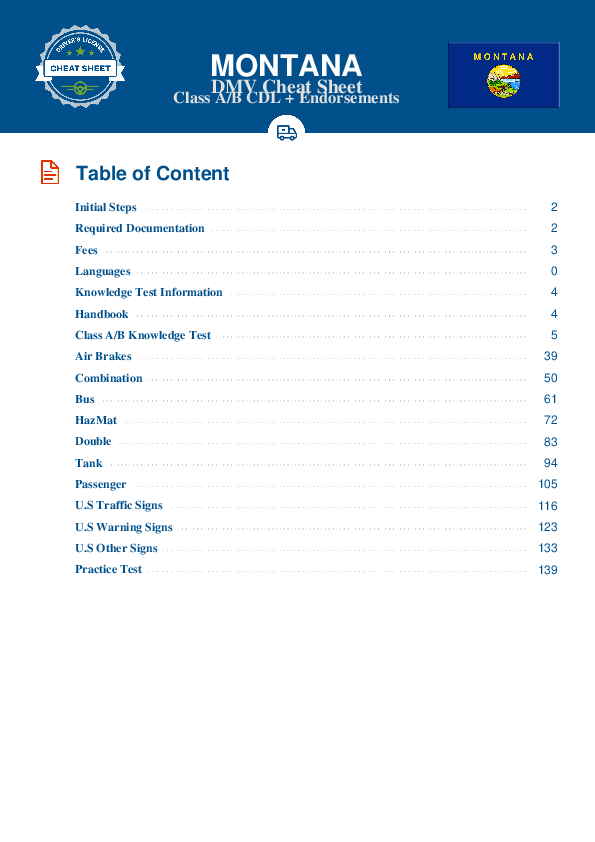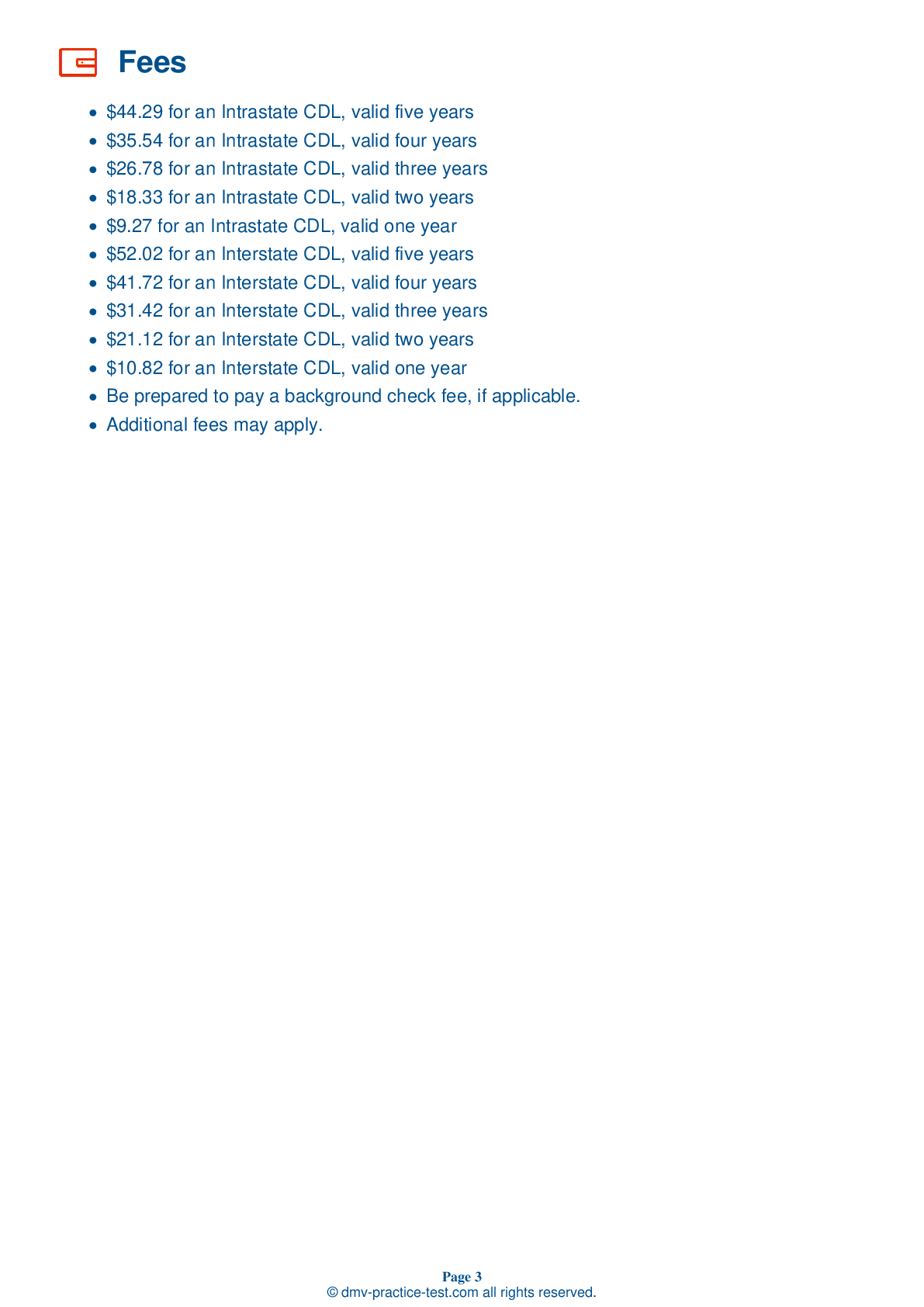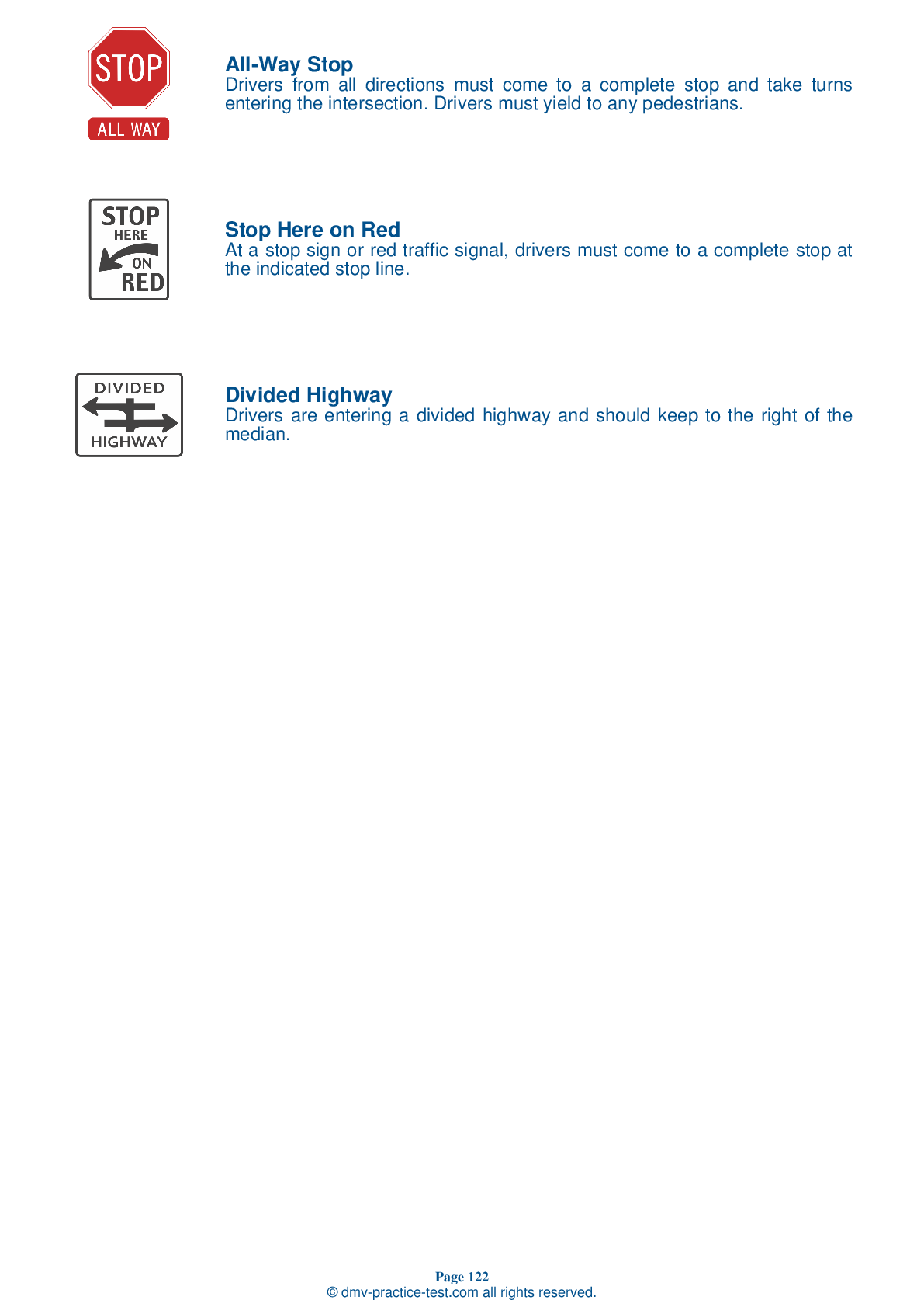Combination Vehicles Practice Test | Montana 2025 #2
Train for FREE online with our Montana CDL combination vehicle test. The official exam test consists of several obligatory parts, with all of them checking your knowledge of different blocks of road rules. If you need to obtain a MT combination license in 2025, practice as much as possible. Free sample tests published on our website will help you check and improve your knowledge and boost your grades. Please bear in mind that DMV requirements for issuing a combination license may vary from state to state.
1 . What does the trailer air supply control look like?
On newer vehicles, the trailer air supply control is an eight-sided red knob. It's used to control the tractor protection valve.
2 . Combination vehicles need extra space on the road because they:
Combination vehicles need more space on the road than other commercial vehicles because they are longer and need more space to turn and stop. It is especially important to properly manage space when you are operating a combination vehicle.
3 . During a trip, which shut-off valves should be open?
When starting a trip, be sure that all shut-off valves are in the open position, except for the last valves on the rear trailer. It is important that air reaches the brakes on all trailers and that the air is not able to escape from the back of the vehicle.
4 . If you use the trailer hand brake while your trailer is skidding, it will:
If you are experiencing a trailer jackknife, you can help your tires regain traction by releasing the brakes. Using a trailer hand brake while experiencing a skid will only cause the skid to continue.
5 . Bobtail tractors are ____ to stop than tractors attached to full semitrailers.
Bobtail tractors are tractors that are not attached to any semitrailers. When operating a bobtail, you should be aware that stopping can be difficult and that it will take a longer distance to come to a complete stop than a tractor attached to a loaded semitrailer.
6 . Using the trailer hand brake while experiencing a trailer jackknife will:
If you are experiencing a trailer jackknife, you can help your tires regain traction by releasing the brakes. Using a trailer hand brake while experiencing a skid will only cause the skid to continue.
7 . Push in the trailer air supply control to:
Push in the trailer air supply control to supply the trailer with air. Pull out the trailer air supply control to turn off the air supply and activate the emergency brakes.
See the exact questions that will be on the 2025 Montana DMV exam.
99.2% of people who use the cheat sheet pass the FIRST TIME
Lillian MCcranie explains how our CDL study guide was helpful in passing the exam and recommends it to everyone.
Cameron tells us how he purchased the CDL exam, and found it to be a useful tool which helped him pass the exam and find a job.



